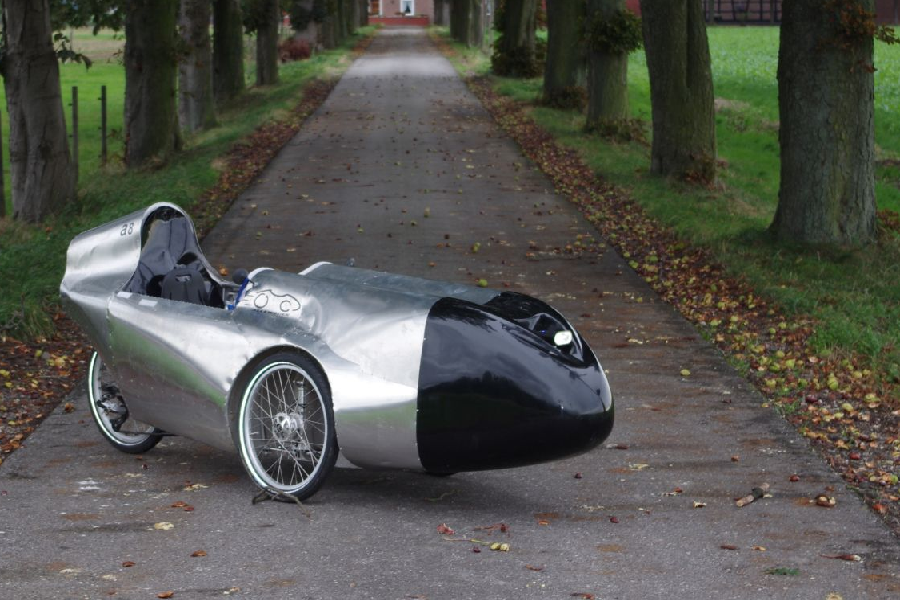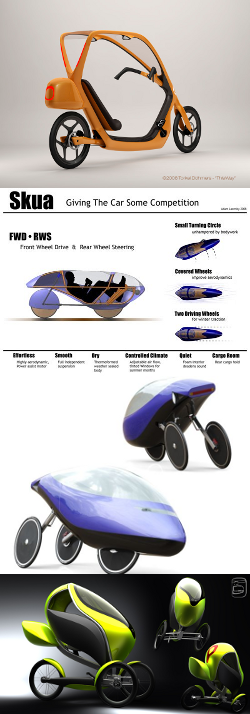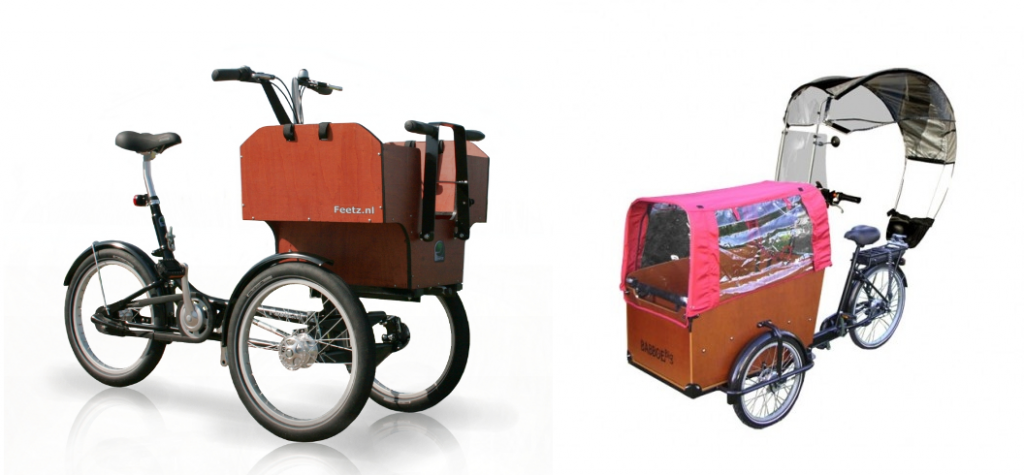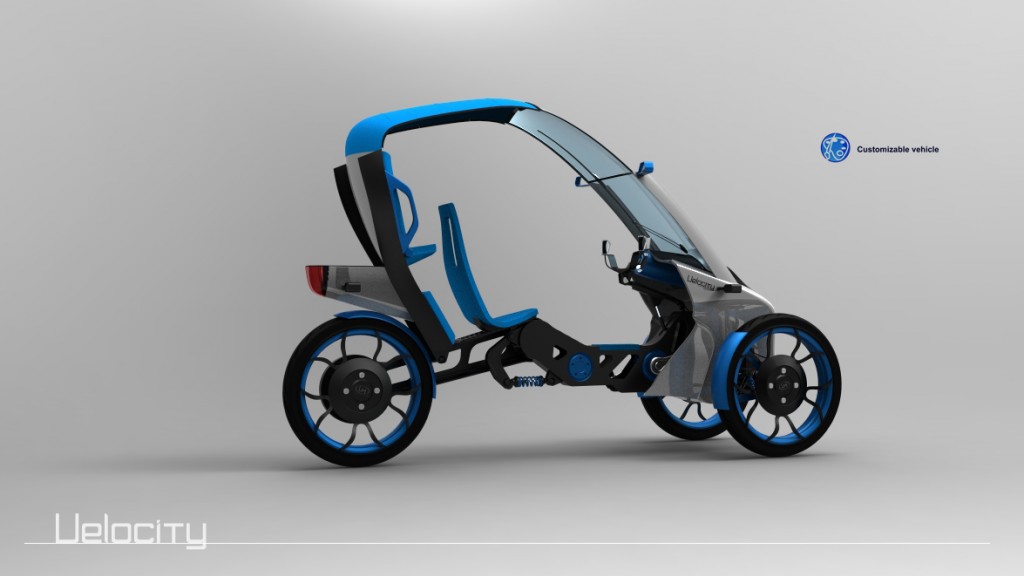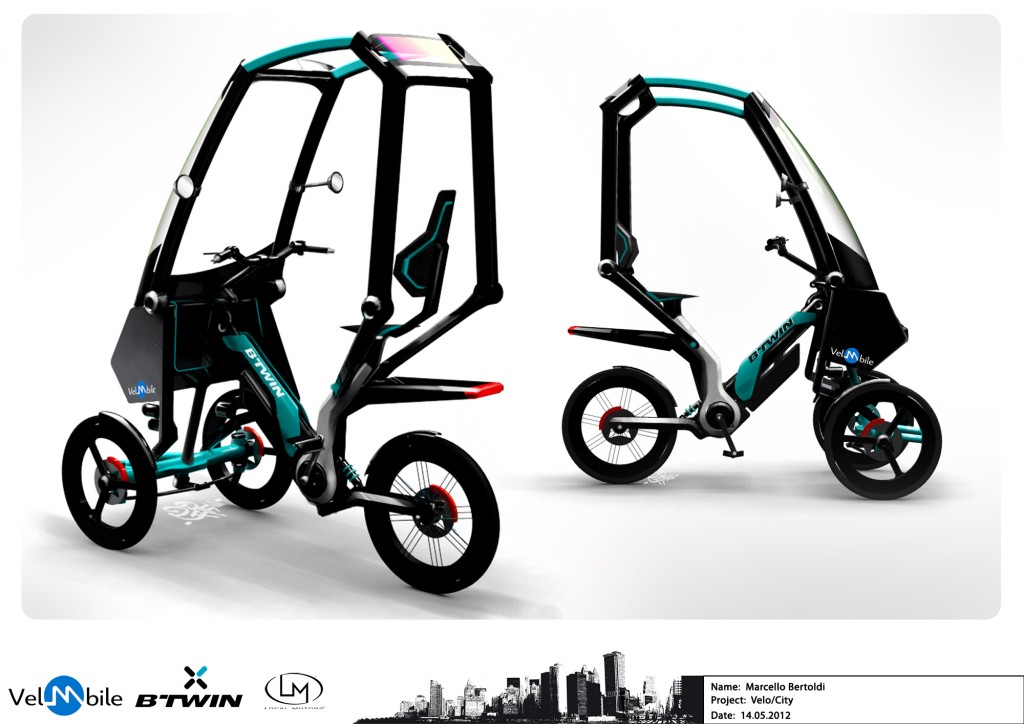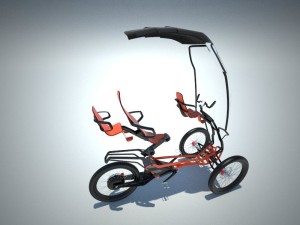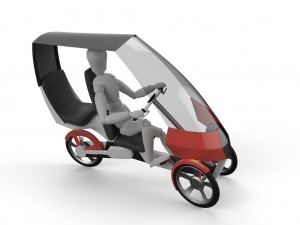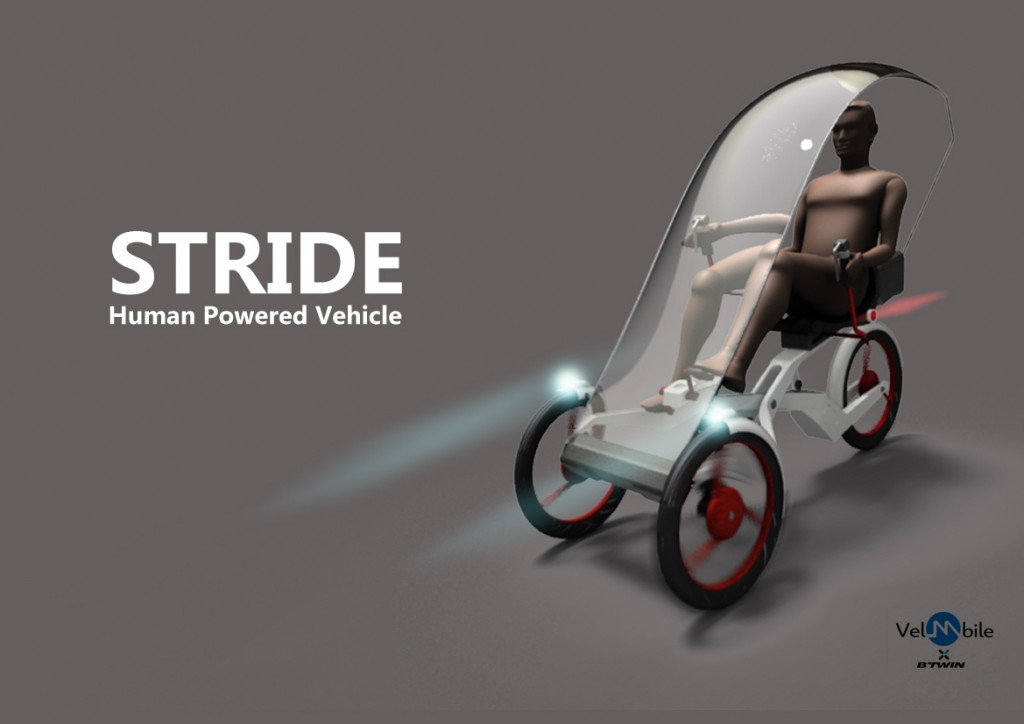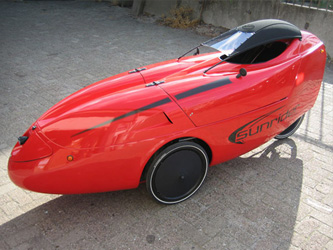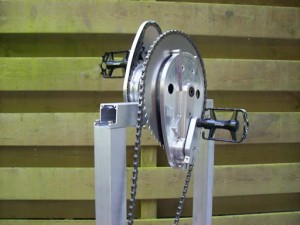On interesting detail from the description of the Zampano, mentioned yesterday, was the use of fabric in the weather-proof body. Fabrics have been used before and various “socks” can be made or obtained, to extend the covering provided by a partial fairing which you might see mounted on a recumbent. Modern materials developed for out-door clothing find a ready application here, and the functionality is no doubt much appreciated by the recumbent rider, as they make their way through the end of year weather. One negative that immediately impresses when you look at such coverings, is the lack of style, due in a large part to the rather limited aerodynamic form which has been achieved.
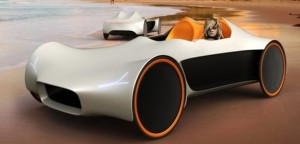 This criticism however, need not be. Recumbent Gallery recently profiled a velomobile concept which as appeared on a number of design blogs by a Czech designer Martin Miklica. I have been unable to locate a website for Martin or his work but he evidently has other interests beside human powered transport. His concept for a four wheel, two seat, socialble basicly involves a light-weight rigid frame covered by a Softshell “stretchy” fabric. For all the criticisms one thing this vehicle does not lack is form and style.
This criticism however, need not be. Recumbent Gallery recently profiled a velomobile concept which as appeared on a number of design blogs by a Czech designer Martin Miklica. I have been unable to locate a website for Martin or his work but he evidently has other interests beside human powered transport. His concept for a four wheel, two seat, socialble basicly involves a light-weight rigid frame covered by a Softshell “stretchy” fabric. For all the criticisms one thing this vehicle does not lack is form and style.
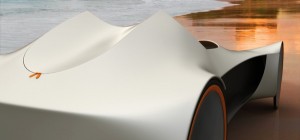 Like so many concepts, once you look past the slick photo-real renderings, the engineer sees numerous technical shortcomings. Recumbent Gallery (RG) rightly observe that there appears to be no space in this design for the usual envelope needed to mount and use a normal crank drive. RG suggests this could be overcome by fitting some kind of linear drive. But once you have grasped the idea of using fixed structural elements to define the edge of the fabric form what is to stop you from adding some similar constraint to further define the shape in the middle, as this design already does toward the rear?
Like so many concepts, once you look past the slick photo-real renderings, the engineer sees numerous technical shortcomings. Recumbent Gallery (RG) rightly observe that there appears to be no space in this design for the usual envelope needed to mount and use a normal crank drive. RG suggests this could be overcome by fitting some kind of linear drive. But once you have grasped the idea of using fixed structural elements to define the edge of the fabric form what is to stop you from adding some similar constraint to further define the shape in the middle, as this design already does toward the rear?
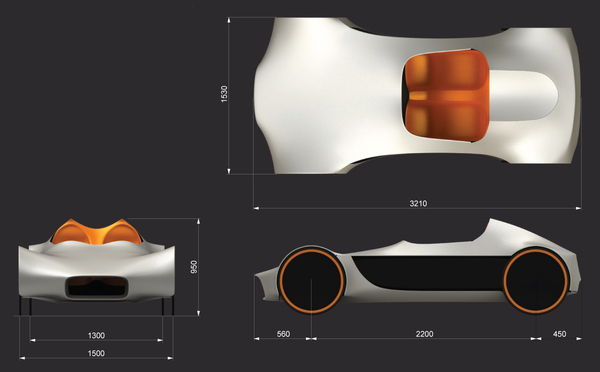 The possibilities from this approach have a lot of potential both to help reduce weight and cost, and also thereby to help reduce the cost of delivery of the product to the end user. It seems to be an ideal way to take Carl-Georg Rassmusen’s concept in the Leitra further, by surrounding the rider(s) in a protective cadge, sealed with an even lighter covering. My only misgiving would be concern over material durability in the real world, where the fabric cover would have to face up, not only to scuffs and rubs, but to sharps and cuts from both the natural and man made environments.
The possibilities from this approach have a lot of potential both to help reduce weight and cost, and also thereby to help reduce the cost of delivery of the product to the end user. It seems to be an ideal way to take Carl-Georg Rassmusen’s concept in the Leitra further, by surrounding the rider(s) in a protective cadge, sealed with an even lighter covering. My only misgiving would be concern over material durability in the real world, where the fabric cover would have to face up, not only to scuffs and rubs, but to sharps and cuts from both the natural and man made environments.
The constrained fabric cover, is already available in a primitive form, with Hase’s Klimax trike, a review of which is expected in the next issue of Velovision Magazine. But there are other prospects in the offing. RG also hints on a new fabric covered velomobile in development, from Czech recumbent makers AZUB, which will be the subject of the next post.


